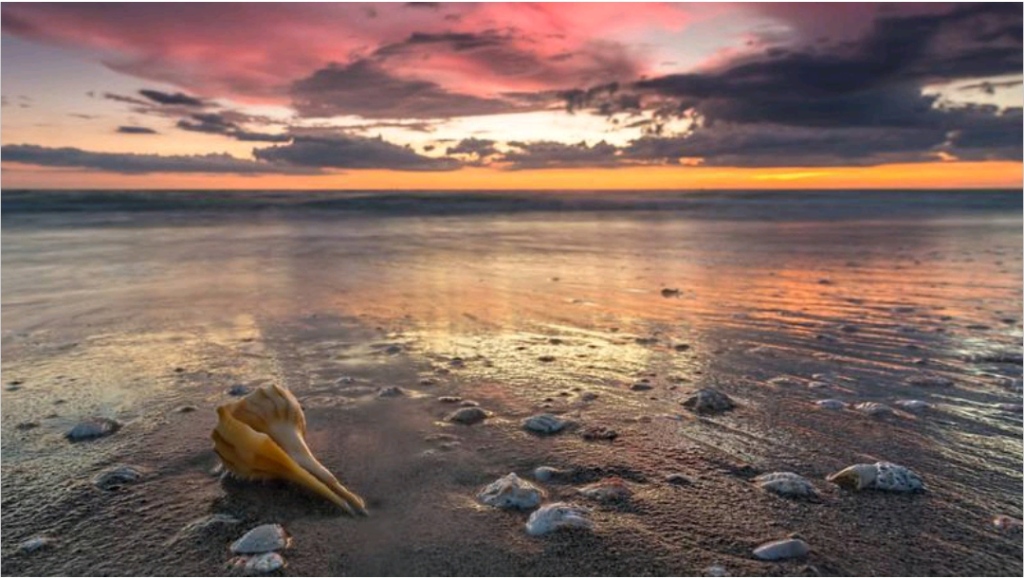No trip to the beach is complete without a little souvenir scavenging. Namely, “shelling,” or looking for seashells. There’s something so wholesomely satisfying about finding a nice sand dollar, gently cleaning it off, and bringing it home as a memento of those beachy vibes. One of the best spots on Earth for shelling is a perhaps unsuspecting spot in Florida. Prepare to do the “Sanibel stoop.”

Sanibel Island sits on Florida’s tropical southwest side in the Gulf of Mexico. The little island, measuring just over 16 square miles, is part of the larger Cape Coral-Fort Myers, Florida Metropolitan Area. It’s warm and sunny like what’s typical of south Florida, but the real differentiator is the shells. Oh, those shells. The place is literally made of shells, for crying out loud.
Sanibel Island is considered one of the world’s best places for finding seashells. The reason this sandy sliver of land is shelling heaven? The island’s geography basically makes it act like a giant scoop. Not only is it shaped like a crescent moon, perfect for cradling the shells that wash in, but the island is part of a large plateau that extends into the Gulf of Mexico for miles. This plateau acts like a shelf for seashells that come all the way from the Caribbean. The island’s east-west orientation is unique too, seeing as most barrier islands like it are north-south.
People in Sanibel aren’t strutting around the island tall and proud with their faces to the sun. Nope. They’re hunched over in what has famously become known as the “Sanibel stoop.” We’ll give you one guess at what they’re looking at down on the ground. Visitors come from all around the world to scoop up the huge variety of seashells that end up on Sanibel’s shores. The best times to scour the sand are during low tide or right after a Gulf storm.

More than 400 varieties of seashells can be found along Sanibel’s beaches. The types of shells you’ll stumble on (literally) range from the expected to the exotic, like the wacky curlicue of Fargo’s worm snail. Some shells you’ll find on Sanibel include (but are definitely not limited to): conch, junonia, lightning whelk, cockle, scallops, murex, tulip (not the flower), olive (not the garnish), and coquina. Whatever you do, don’t touch anything that might still have a living thing inside or attached, or risk getting in trouble with the law.